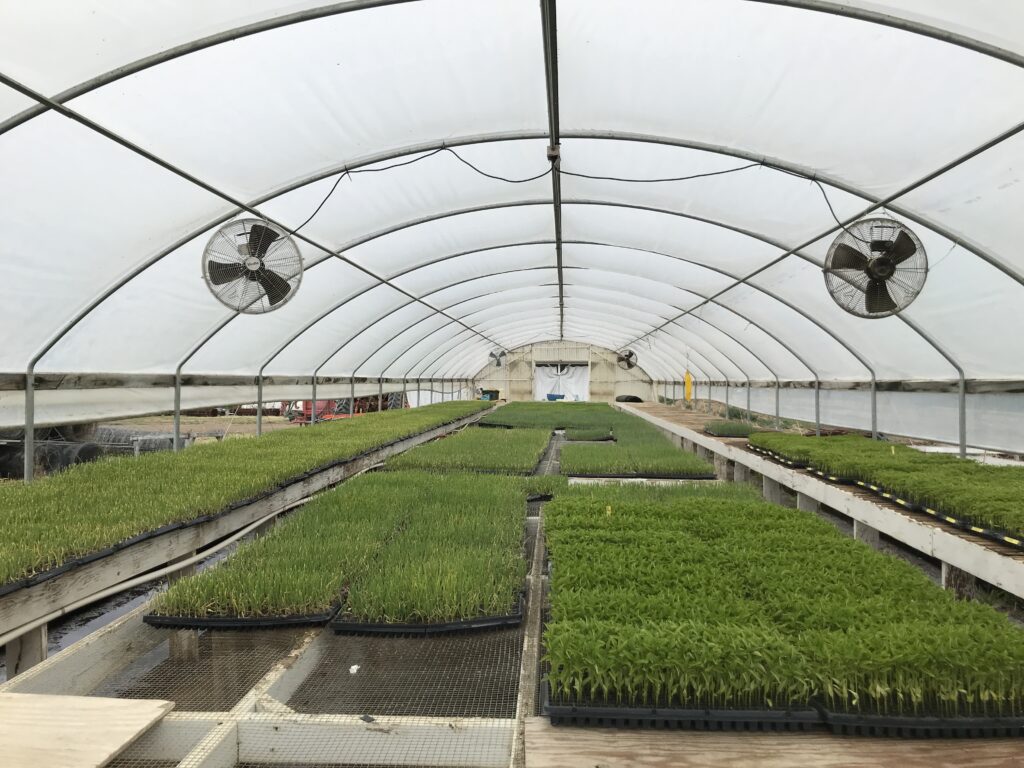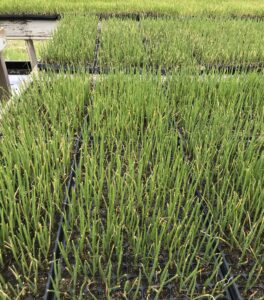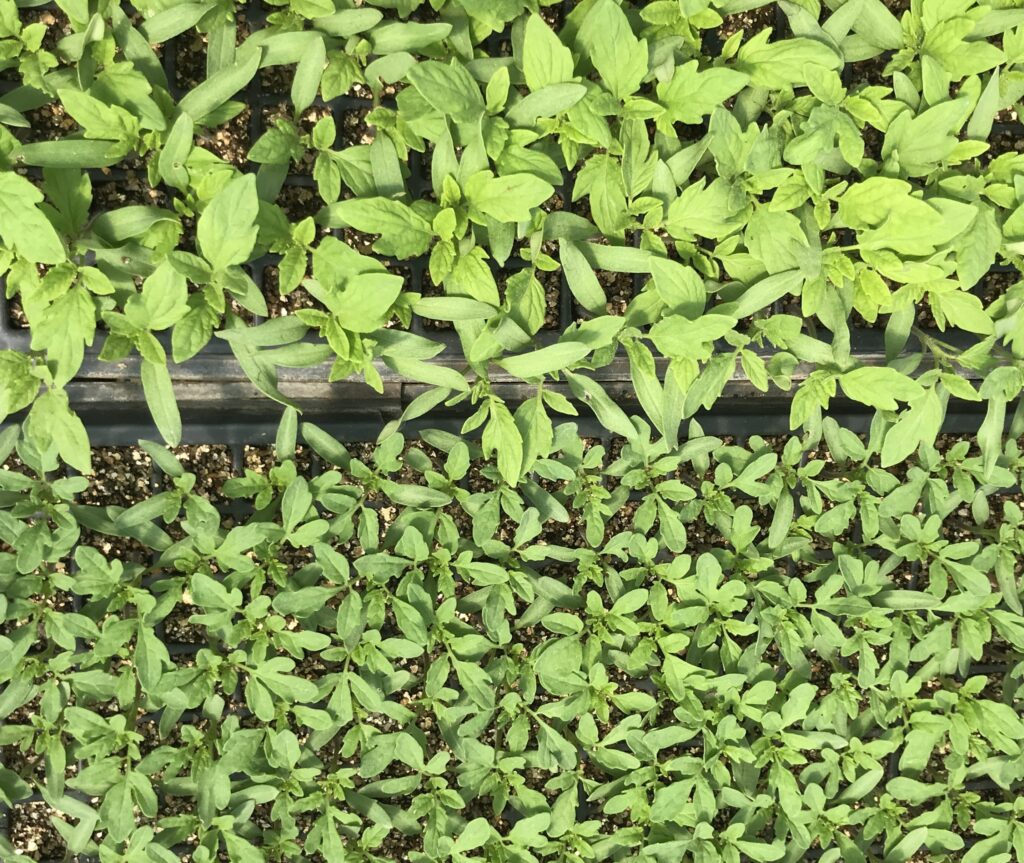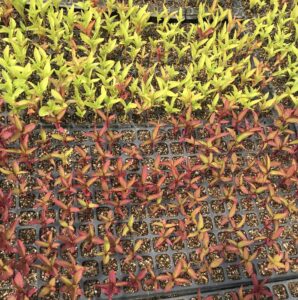
For this week’s News from the Farm, a few notes about the greenhouses that didn’t make it into last week’s dive into the greenhouse. If you missed, or skipped, last week’s News from the Farm, you can read it here.
First: seeding. Each planting flat holds a lot of seeds. Most of our trays have 200 cells and each cell needs to be filled, and with just one seed. This can be done by hand, and for many years, we did all of our seeding by hand. But roughly 15 years ago, we got a vacuum seeder and we now use that for as much planting as we can.
It’s simple technology. First, choose a plate that corresponds to the type of flat, meaning it has one hole for each cell in the flat, so in our case, 200 holes. Pour seeds onto the plate, turn on the vacuum pressure and move the plate until there is one seed attached to each hole. Pour out the extra seeds, invert the plate over the flat, then turn off the vacuum and each seed is dropped into each cell.
You can see Andrew using it in this video:
Vacuums seeders work best with round, regular seeds like brassica seeds (broccoli and kale) which are naturally round, and pelleted seeds have a coating to give them an even, round shape. It doesn’t work great for tomato seeds, which are flat with microhairs that stick together (but we still use it), and we don’t use it at all for many flower seeds which can have really varied shapes.
Second: temperature control. The ideal temperature of the greenhouse is in the low 80s. During cold January days, our primary concern is keeping things warm, so we’re often heat the greenhouses. When it starts getting warmer, like it will this week, we have the opposite problem. Fans are almost always running (in addition to temperature regulation, the air circulation they provide helps prevent pests and disease issues and helps grow stronger plants) so we need other tools. The sides of the greenhouses can be rolled up to let in outside air and in late spring we cover the greenhouses with shade cloth (like the peppers) to block some light and keep things a little cooler. Some other farms also can remove, or roll back, their roof, but ours don’t have that capacity. This is a big part of why our greenhouse work is very seasonal we only use them during the cooler months! By this time next month, we’ll be done in our greenhouse.
Last: a game! Can you identify these young greenhouse plants? Answers at the bottom.





When looking at a full greenhouse, it’s amazing to think about just how many plants are in one place at one time. In a six-square foot area, you have 4,000 plants that will later be spread over half an acre (about 22,200 square feet) and you can see them all at once and easily observe individual plants, which isn’t possible once they’re planted in the field.
Elaine Swiedler, CSA Manager
Answers: Eggplant, onions, tomatoes (early girls on the top, cherry tomatoes on the bottom – both seeded on the same date, April 15), peppers (jalapeños on the left and pimentos on the right), celosia (a flower, part of the amaranth family)
